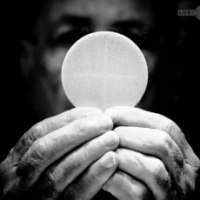The Church designates each Saturday in Ordinary Time, when there is no other obligatory memorial, as a memorial to the Blessed Virgin Mary. (Celebrations on the liturgical calendar have three ranks: solemnities, feasts, and memorials; memorials being the least important of the three. See the General Norms for the Liturgical Year and the Calendar III. …
Tag Archives: liturgical calendar
The Body and Blood of Christ
Today at Mass we celebrated the Feast of Corpus Christi, the Solemnity of the Most Holy Body and Blood of Christ. According to the Roman Missal, the actual date of the feast worldwide was last Thursday, the Thursday after Trinity Sunday; but in countries in which Corpus Christi is not a Holy Day of Obligation, …
Saint Joseph’s Day
Today is Saint Joseph’s day, my name day. But now is probably the time to note how completely out to sea I feel in many aspects of Catholic culture. I don’t entirely understand how “patron saints” work, for churches and institutions, but particularly for individuals. Is there some formal process by which a patron saint …
Poor Saint Valentine
This morning, picking myself up off the ground and climbing back on my horse yet again, I happened to glance a few pages back in my Magnificat, and take a look at the liturgical calendar. In my anxiety to avoid all the glut and glurge of St. Valentine’s Day the other day, I had neglected to …
